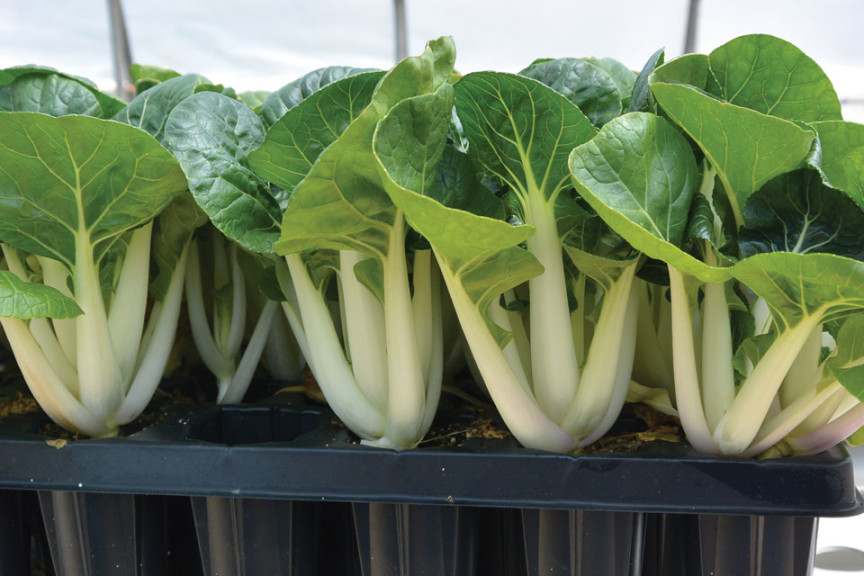(Roseaceae)
(Roseaceae)
The toxic compound produced by Rosaceae plants.
Cyanogenic glycosides
define petiole

Plants need Nitrogen to grow. What compounds are made from N?
proteins, nucleic acids, vitamins, and defense molecules
does marker-assisted breeding include mutating/engineering genes?
No. molecular breeding is just like conventional breeding but using gene-level phenotyping instead phenotyping with fruit size/sweetness/pest-tolerance etc.
Advantages of herbicide tolerant (HT) crops
Safer’ than previous herbicides.
Lower application rate and fewer sprays:
1-2/per season.
Farmers have higher profit
less $$ is spent on chemicals
less plowing (prevents soil erosion).
What type of fruit is an almond?
a drupe
list 2 of crops that have been cultivated from Beta vulgaris?
Swiss chard, spinach, sugar beets, and table beets
What is translation in the central dogma?
making protein from RNA
What is Bt?
Bacillus thuringiensis (or Bt) is a soil bacterium that
naturally produces an insecticidal protein (sometimes
called Bt toxin).
What are ways for plants to disperse?
Whole plants or plant fragments (not an issue in the field)
Seeds/Fruits (highly regulated; when rules are followed no problems)
Pollen (hybridization; we cannot control mother nature – wind and
pollinators)
a polygenic trait
Polygenic traits are controlled by two or more genes with incomplete dominance.
What type of fruit a pseudograin is
achene
name 2 features of DNA
stable, able to contain a lot of information, able to be accurately copied, able to transmit information
accurately, and mutable to explain inheritance
of alleles.
how is Bt used in agriculture?
spraying the bacteria (spores) on plants (USDA organic), spray the Bt protein on plants (USDA organic), and make GE crops that express the Bt protein.
name 2 of the 7 ways to control weeds
Seven ways to control weeds.
1. Solarization of soil. (labor intensive - $$) (USDA organic)
2. Mulches to prevent light to getting
to seeds of weeds (labor intensive - $$). (USDA organic)
3. Hand weeding and hoeing (when
weeds are young) (labor intensive - $$). (USDA organic)
4. Use ‘natural’ products (long-term impacts on soil
often not tested; assumption natural = safe). (USDA organic)
5. Plowing under weeds from the
previous year (causes soil erosion).
6. Targeted synthetic herbicide treatment.
Spray weeds individually.
7. Non-selective synthetic herbicide treatment.
Spray the entire field. ($
What type of fruit is a strawberry?
Multiple achenes on a receptacle.
Do artificial sweeteners induce the "stop eating" signal. to the brain?
No. glucose does this.
what were some of the cons of the green revolution?
Cons:
Change in N cycle =There is a global fixed-nitrogen surge (nitrate) that is causing algal blooms, dead zones and acid rain.
Decreased genetic diversity
Too expensive for small farmers in developing countries
How does the Sub1A gene confer resistance to submergence?
Rice landraces tolerant of up to 2 weeks of complete submergence were
collected from farmers’ fields in the 1950s.
Landrace genetic diversity was critical for the success of this project
Plant becomes quiescent.
Waits until water recedes
(2-3 weeks)
Better long-term strategy
Which three regulatory US agencies oversee the risk assessment of any genetically modified crops?
Food and Drug Adminations (FDA)
Environmental Protection Agency (EPA)
United States Department of Agriculture (USDA)
Fermented dairy products have more or less lactose than other dairy products? and why?
Less Lactose. bacteria break down lactose into smaller sugars.
define polyploidy and why agriculture is interested in it.
(of a cell or nucleus) containing more than two homologous sets of chromosomes. Usually results in increased biomass.

explain Losey et al's data and the take-away results.
Experiment to measure effect of Bt pollen on Monarch butterfly larvae development. Did not use accurate pollen levels as in the wild, methods were not clear, results could not be replicated by other researchers in other labs, was sensational in the news (gave GMO crops bad wrap without proper evidence).
Define a protoplast and why we used these in breeding for potato-blight resistance.
A plant cell without its cell wall that is used for plant transformation. The wild relative and cultivated potato could not be crossed. We could not use classical breeding.